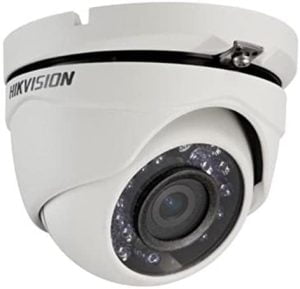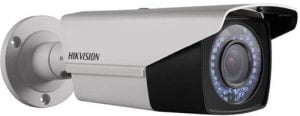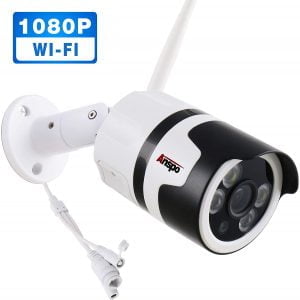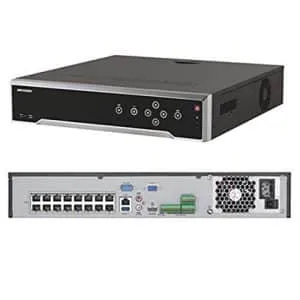
Different Types of CCTV Cameras and materials needed for cctv installation
When it comes to CCTV installation, it’s important to understand that there are different types of CCTV cameras available in the market, each with its own unique installation requirements. These cameras are designed to cater to various surveillance needs, whether it’s for home security or commercial surveillance. In this article, we will explore the different types of CCTV cameras and the specific materials needed for their installation.
1. Dome Cameras:

Dome cameras are one of the most common types of CCTV cameras used for indoor surveillance. These cameras are characterized by their dome-shaped housing, which makes them blend seamlessly with the surroundings. Dome cameras can be wall or ceiling-mounted and usually require brackets or mounts for installation. Additionally, they require power cables and BNC cables for video transmission.
2. Bullet Cameras:

Bullet cameras are another popular choice for both indoor and outdoor surveillance. These cameras are named after their sleek, cylindrical shape resembling a bullet. Bullet cameras are typically wall-mounted and require brackets for installation. They also need power cables and BNC cables for video transmission.
3. PTZ Cameras: PTZ (Pan-Tilt-Zoom) cameras are specially designed for providing maximum coverage and flexibility. These cameras have the ability to pan, tilt, and zoom, allowing the user to control the camera’s movement remotely. PTZ cameras are generally ceiling-mounted and require brackets for installation. They also require power cables and RS-485 cables for communication and control.
4. Thermal Cameras:

Thermal cameras are designed to detect heat energy emitted by objects and individuals. These cameras are commonly used for security purposes, especially in low-light or no-light environments. Thermal cameras require specialized mounting brackets for installation. Power cables and video cables are also necessary for their operation.
5. Wireless Cameras: As the name suggests, wireless cameras eliminate the need for video cables during installation. These cameras transmit video and audio wirelessly, making them easy to install and set up. However, wireless cameras require power cables for operation and may need additional equipment like wireless transmitters and receivers for signal transmission.
6. IP Cameras:

IP (Internet Protocol) cameras are becoming increasingly popular due to their advanced features and ease of integration with network systems. These cameras are connected to the network, allowing for remote viewing and management. IP cameras require power cables and network cables for installation.
Essential Tools Needed for CCTV Installation
Installing a CCTV system requires proper planning and the right set of tools. Whether you are setting up a security camera system at home or in a commercial space, having the essential tools at your disposal will ensure a smooth installation process. Here are some of the key tools you will need:
Screwdrivers and Drills

Screwdrivers are indispensable when it comes to CCTV installation. You will need both flathead and the star screwdrivers to secure cameras and mountings. Additionally, a power drill will come in handy for drilling holes to mount brackets and pass cables through walls or ceilings. Make sure to have a variety of drill bits, including masonry bits for concrete walls and multipurpose bits for wood and metal.
Wire Strippers and Crimping Tools

As you set up your surveillance system, you will often need to strip and crimp wires for a secure connection. Wire strippers will help you remove the outer insulation from the cables, allowing you to expose the necessary wires for connection. Crimping tools are essential for attaching connectors to the exposed wires, ensuring a reliable and stable connection.
Fish Tape or Wire Puller

In some installations, you may need to run cables through conduits or tight spaces. A fish tape or wire puller enables you to navigate through these tight areas and pull the cables to the desired location. This tool makes it easier to route cables within walls, ceilings, and other hard-to-reach areas.
Levels and Measuring Tools

To ensure accurate placement and alignment of your CCTV cameras, it is essential to have a level and measuring tools. A bubble level will help you ensure that your cameras are properly aligned horizontally and vertically. A measuring tape or a laser measuring tool will assist in accurately measuring distances, ensuring the correct placement of cameras at the desired locations.
Cable Tester and Multimeter

Before finalizing the installation, it is crucial to test the cables and connections to ensure optimal functionality. A cable tester can help identify any connectivity issues or faults in the cables, allowing you to rectify them promptly. Additionally, a multimeter is an invaluable tool for troubleshooting and measuring voltage, resistance, and continuity of electrical components.
Wiring and Cables Necessary for a CCTV Setup
When it comes to setting up a CCTV system, choosing the right wiring and cables is crucial for a successful installation. These components play a crucial role in transmitting video footage from the cameras to the recording device without any loss of signal quality or interference. Here are the essential materials needed for a CCTV setup:
1. Coaxial Cables:

Coaxial cables are commonly used in CCTV installations due to their ability to carry video signals over long distances. These cables consist of a copper conductor surrounded by an insulating layer, a metallic shield, and an outer insulation layer. Coaxial cables come in various grades, such as RG59, RG6, and RG11, with each grade having different characteristics and transmission capabilities. It is important to choose the appropriate grade based on the distance between the cameras and the recording device.
2. Power Cables:

In addition to transmitting video signals, CCTV cameras also require power to operate. Power cables are used to provide a stable power supply to the cameras. These cables typically consist of two wires, one positive and one negative, and are available in different lengths to accommodate varying installation requirements. It is important to ensure that the power cables are properly insulated and capable of handling the voltage and current requirements of the cameras.
3. Network Cables:

Network cables, such as Category 5e (Cat5e) or Category 6 (Cat6) cables, are used in IP-based CCTV systems to establish a connection between the camera and the network. These cables are designed to transmit data over long distances and provide high-speed and reliable network connectivity. Network cables are essential for transmitting video footage, as well as enabling remote access and control of the CCTV system.
4. BNC Connectors:

BNC (Bayonet Neill-Concelman) connectors are commonly used to connect coaxial cables to the cameras and the recording device. These connectors ensure a secure and reliable connection, minimizing signal loss and interference. BNC connectors are available in various types, including twist-on, crimp-on, and compression connectors, each offering different levels of ease of installation and durability.
5. Power Adapters and Power Supply:

Depending on the CCTV system, power adapters or a central power supply unit may be required to provide power to the cameras. Power adapters convert the AC voltage from the power source to the DC voltage required by the cameras. It is essential to choose power adapters and power supply units that are compatible with the cameras and capable of delivering the necessary power.
Important Considerations for Effective CCTV Placement
Effective placement of Closed-Circuit Television (CCTV) cameras plays a crucial role in ensuring optimal surveillance coverage. By strategically positioning the cameras, you can enhance security and deter potential threats. Here are some essential considerations for effective CCTV placement:
1. Identify Vulnerable Areas

Prior to installing CCTV cameras, it is vital to identify the vulnerable areas of your property that require surveillance. These areas may include entrances, parking lots, blind spots, and other high-risk zones. By focusing on these areas, you can maximize the effectiveness of your CCTV system and gain a clear view of potential threats.
2. Coverage Angle

When installing CCTV cameras, it is important to consider the coverage angle of each camera. Different types of cameras have varying viewing angles, such as wide-angle, fixed, or zoom cameras. By selecting cameras with appropriate coverage angles, you can ensure complete coverage of the specific areas you wish to monitor.
3. Lighting Conditions
Lighting conditions greatly impact the clarity and effectiveness of CCTV footage. It is crucial to consider the lighting conditions in the areas where you plan to install cameras. For example, low-light areas may require cameras with infrared capabilities, while areas with varying lighting conditions may require cameras with automatic adjustments to capture clear images.
4. Height and Positioning
The height and positioning of CCTV cameras play a significant role in capturing detailed and usable footage. Cameras should be installed at a height that provides a comprehensive view of the surroundings without any obstructions. Additionally, consider angling the cameras downwards to better capture facial features and avoid unnecessary blind spots.
5. Weather Resistance

If you plan to install outdoor cameras, it is crucial to choose weather-resistant models. Consider cameras that are designed to withstand varying weather conditions, such as rain, extreme temperatures, or humidity. Ensuring the weather resistance of the cameras will enhance their durability and longevity.
Additional Materials Required for Advanced CCTV Features
When it comes to setting up a CCTV system, the basic components like cameras, cables, and DVRs are essential. However, for those who are looking for more advanced features and functionalities, there are additional materials that can enhance the CCTV installation. These additional materials can provide better surveillance capabilities, increased convenience, and improved security. Let’s take a look at some of the extra materials that can take your CCTV system to the next level.
1. Pan-Tilt-Zoom (PTZ) Cameras
PTZ cameras are a valuable addition to any CCTV installation. These cameras have the ability to pan, tilt, and zoom, providing users with greater control over their surveillance area. PTZ cameras can rotate 360 degrees horizontally, tilt vertically, and zoom in to capture fine details. They are commonly used in areas that require extensive coverage, such as large outdoor spaces or critical entry points.
2. Infrared Illuminators

Infrared illuminators are essential for night-time surveillance. They emit infrared light, which is invisible to the human eye but can be detected by CCTV cameras. By installing infrared illuminators, you can significantly improve the visibility of your CCTV system in low-light or completely dark environments. This is particularly important for outdoor areas where traditional lighting may not be sufficient.
3. Video Analytics Software

Video analytics software is a powerful tool that can add intelligence to your CCTV system. This software is capable of analyzing video footage and generating alerts or notifications based on predefined rules. It can detect various events such as object removal, motion detection, or even facial recognition. By incorporating video analytics software into your CCTV system, you can effectively monitor and protect your premises in a more efficient and proactive manner.
4. Network Video Recorders (NVRs)

NVRs are an advanced alternative to traditional Digital Video Recorders (DVRs). Unlike DVRs, which store surveillance footage on physical hard drives, NVRs can store video data on network-attached storage devices or cloud-based platforms. NVRs offer greater scalability, flexibility, and remote access capabilities. They also support higher resolution cameras, making them ideal for high-definition CCTV installations.
Conclusion
To ensure a successful CCTV installation, it is crucial to have a thorough understanding of the different types of CCTV cameras and their specific installation requirements. Whether you opt for dome cameras, bullet cameras, or PTZ cameras, each type has its unique characteristics and demands proper positioning and mounting to achieve optimal surveillance coverage. By familiarizing yourself with these installation requirements, you can make informed decisions on camera placement and ensure the best results for your CCTV system.
In addition to understanding camera types, equipping yourself with the essential tools for CCTV installation is vital. These tools include a power drill, screwdriver set, wrenches, and a ladder for reaching higher installation points. A cable tester, crimping tool, and wire stripper are also necessary for ensuring a clean and efficient wiring connection. By possessing the necessary tools, you can tackle the installation process with confidence and efficiency, ensuring that each camera is securely mounted and correctly connected to the system.
The wiring and cables required for a CCTV setup are crucial components that determine the quality and reliability of the video feed. Coaxial cables, twisted pair cables, and network cables are commonly used for CCTV installations, depending on the specific requirements of the cameras and the distance between them and the recording device. It is essential to use cables suitable for transmitting high-quality video signals while minimizing interference and signal loss. Properly labeling and organizing the cables during installation will also simplify future maintenance and troubleshooting tasks.
When it comes to effective CCTV placement, there are several important considerations to keep in mind. Firstly, identifying the areas you want to monitor and mapping out the camera locations will help determine the number of cameras needed and their optimal angles of view. Considering factors such as lighting conditions, blind spots, and potential obstructions will enable you to position the cameras strategically, maximizing surveillance coverage and minimizing potential vulnerabilities. Regularly adjusting and optimizing the camera angles and fields of view is also crucial for keeping up with the ever-changing nature of the surveillance environment.
For those seeking advanced features and capabilities in their CCTV system, additional materials may be required. These may include infrared illuminators for enhanced nighttime visibility, pan-tilt-zoom (PTZ) controllers for remote camera control, and network video recorders (NVRs) for superior video storage and management. Motion sensors, alarms, and video analytics software can also be integrated for added security and advanced monitoring capabilities. By utilizing these additional materials, you can customize your CCTV system to meet your specific needs and enhance the overall effectiveness of your surveillance.
In conclusion, a successful CCTV installation requires careful consideration of the various types of cameras and their installation requirements, the essential tools needed, the appropriate wiring and cables, effective camera placement, and the potential integration of additional materials for advanced features. By paying attention to these aspects and ensuring proper installation and configuration, you can establish a robust and reliable CCTV system that provides optimal surveillance coverage and enhances the security of your premises.

